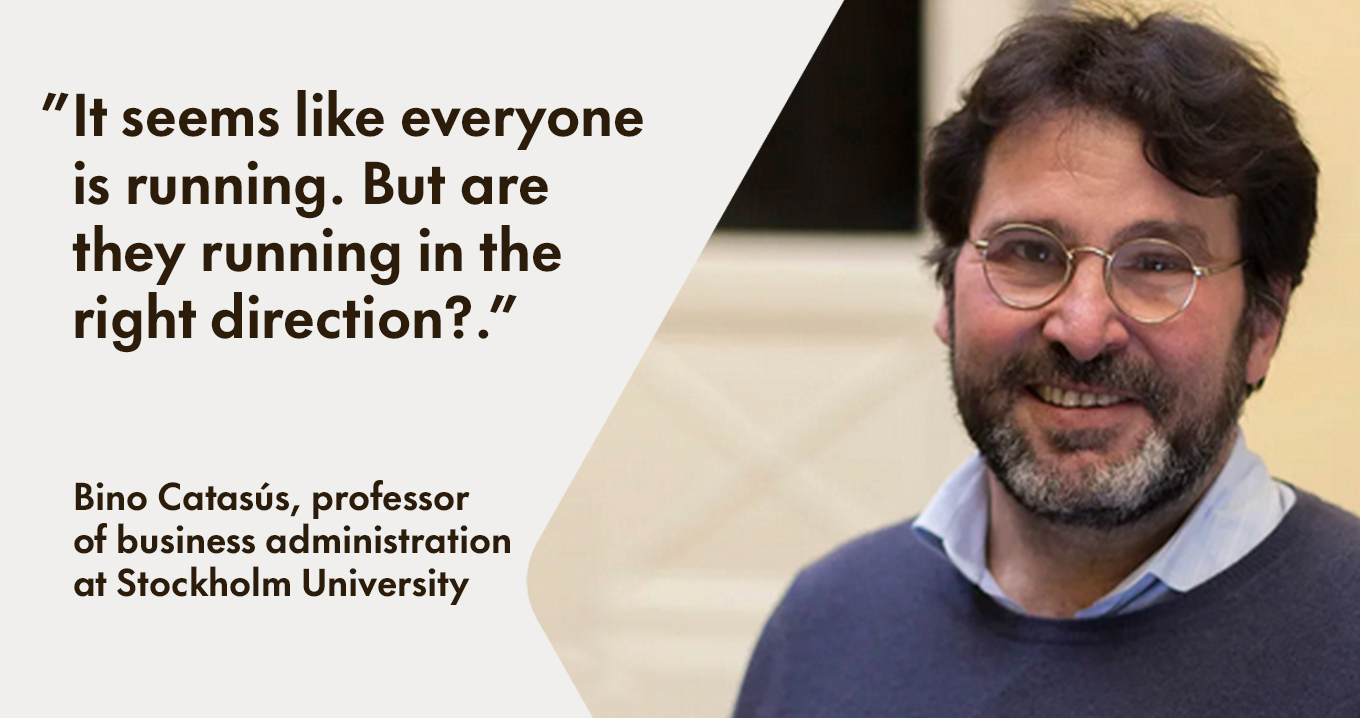Motivation and Learning – Here are Five Tips to Nail the KPIs
It sounds simple: Aa few relevant and accurate KPIs that the team or organisation agrees on. Actions should be taken when they deviate. But reality is more complex than that. Ultimately, it is people who make the decisions and employees who take action. And there are several things to consider to ensure that speed and numbers don't take over.

Bino Catasús, professor of Business Administration at Stockholm University, is said to be passionate about numbers. The truth is that he is passionate about how people are affected, act and are driven by the KPIs that exist.
Per Engwall is a system architect and co-founder of Hypergene. Over the past 25 years, an important part of his work in product development has been to consider how to arrive at the right KPIs for the right goals and parts of the organisation.
Per Engwall and Bino Catasús share several insights into how organisations that want to gain better control of their financial KPIs, forecasts and Performance Management can help achieve their goals in the best possible way:
1. Don't Use Too Many KPIs
According to Bino Catasús, when employees or managers have to deal with too many KPIs in their business, three major problems arise:
- It takes up resources.
- You can't see the forest for the trees.
- Anything can be described and explained "if there is too much data".
"Numbers should be the beginning of the discussion, not the end. Working with several hundred KPIs every month risks turning into a kind of vocabulary quiz. Research shows that we can keep about seven things in our heads at the same time. I think that's a good rule of thumb for the number of KPIs," says Bino Catasús.
"Above all, it's about understanding the journey you want to take and which part of the organisation it concerns. Once the goal and function have been set, it's time for the next step: Creating relevance and comprehensibility," says Per Engwall.
2. Let Some of the KPIs Be of Motivating Nature
"The art is to balance what can be perceived as negative, such as values that cannot be missed or exceeded, with having all the parameters that work as a carrot. At the same time, the negative outcome can also be positive if it leads to a change effort. Otherwise, it becomes just a lamp that blinks red," says Per Engwall.
"It's important that we dare to show the problems without becoming fault-finders. People want to be proud and feel that they are doing something good. My advice is to take three things that you are proud of and three challenges. Then the business can move forward," says Bino Catasús.
3. Prioritise Time for Learning
Bino Catasús has observed that many organisations seem to have no time for learning. The risk is that everyone involved has made up their minds and moves on without reflecting.
"For me, learning is at the center of KPIs. To learn, individuals and organisations need to accept that there is a lack of knowledge or accept that we have been wrong. Here, KPIs can serve as an alarm clock."
4. Look Beyond the Numbers
"Numbers are not the locomotive, they are the auxiliary engine. Numbers don't do anything, it's people who make decisions and are affected by them," says Bino Catasús.
The amount of data and information available today risks becoming too much. In short, it's almost always possible to find statistics that support your own thesis.
"The prime example is the political debates we have seen in the last year. Numbers are thrown back and forth. We cannot govern companies and organisations this way - it would be disastrous," says Bino Catasús.
"Looking beyond the numbers means not only focusing on, for example, the budget value. You can try to quantify almost everything, but there are few things that beat having a good conversation with employees who work closely with the business. In essence, it's not the numbers themselves that create engagement in change work, it's people in conversation with other people. However, both conversations and the right data are needed to succeed all the way," says Per Engwall.
5. Avoid Speed Before Direction
"Everyone seems to be running fast. But the question is whether they are running in the right direction. My feeling is that there is a lot of speed before direction, and I think that is risky. It's a prioritisation issue for managers. To dare to pause, to dare to prioritise," says Bino Catasús.
"Working agilely and striving for continuous improvement is a philosophy for many organisations and companies today. But there is a risk that we lose sight of the long-term if there is too much focus on the stage we are in at the moment. We need to constantly acknowledge that we may need new key figures for different parts of the journey. Make sure to always have a good binoculars," says Per Engwall.
Being able to easily create, manage, and follow up on key figures is an important part of Hypergene.
7-minutes video demo of Hypergenes solution:



